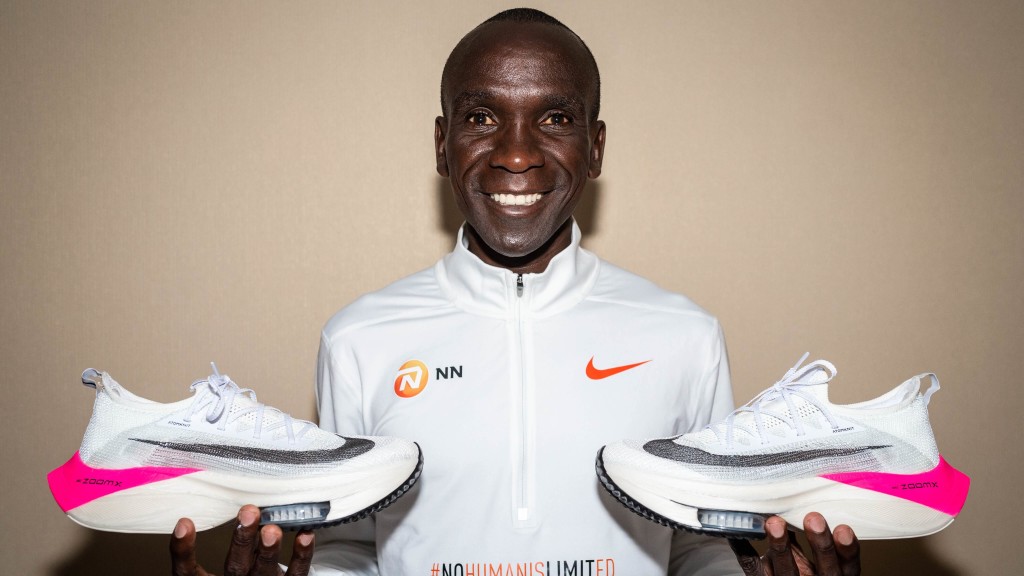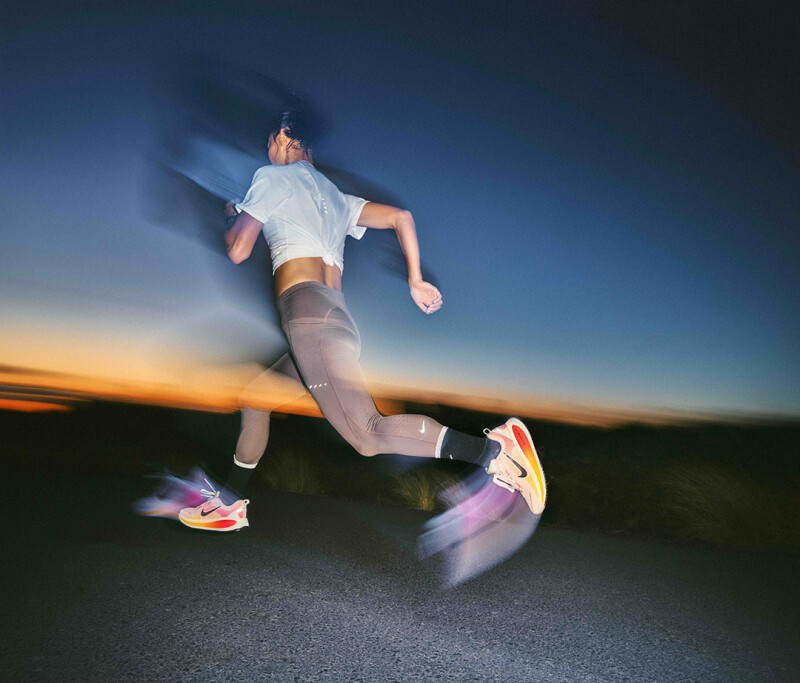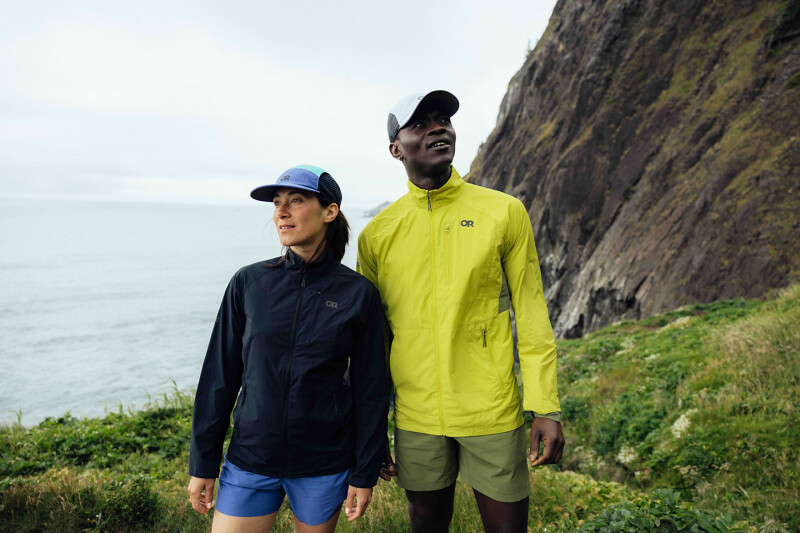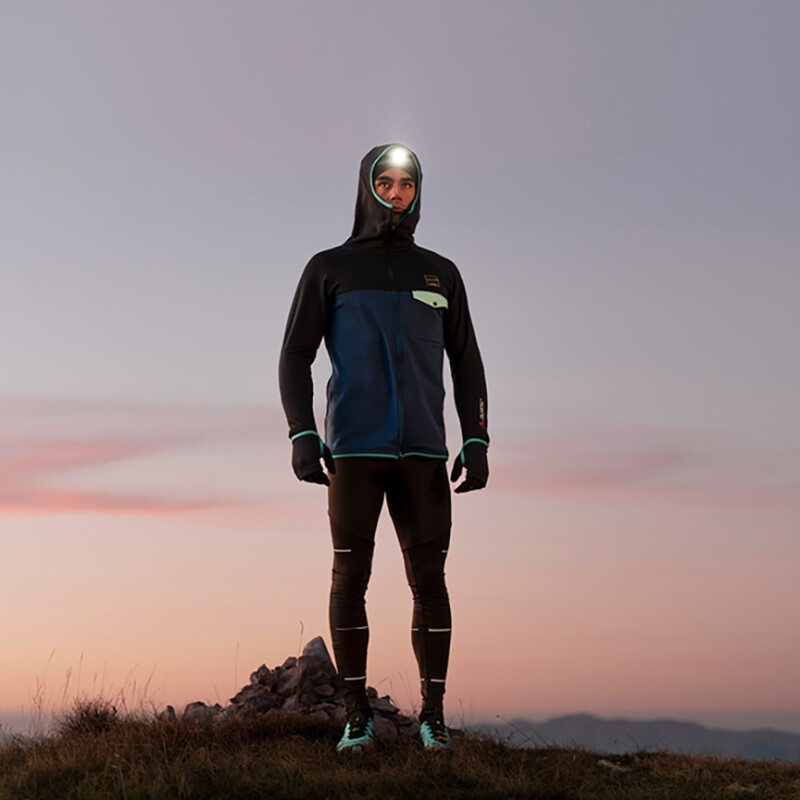A new wave of running shoes is rolling ashore in February and it could change running forever.
Say whatever you want about the innovative running shoes with curved, rigid plates embedded in thickly cushioned midsoles, but they’re here to stay. They’ve been called unfairly advantageous, outrageously expensive and even unethical. But the bottom line? They definitely help runners race faster. A lot faster.
Although they might be controversial at the elite level, they’re changing the game for committed recreational runners interested in chasing new marathon and half marathon PRs. Need proof? The sub-elite starting corrals of the recent California International Marathon, Houston Marathon and Rock ‘n’ Roll Marathon in Phoenix have been a blur of runners shod in bright red, pink and green Nike Vaporfly shoes and social media feeds all over the world show runners celebrating new PRs.
What started with Nike’s revolutionary Vaporfly 4% model in 2017 has spawned a new paradigm in shoe design. Nike’s Zoom X Vaporfly Next% and Hoka’s Carbon X and New Balance’s Fuel Cell 5280 were next to join the fray last yearr and now the trend has spanned the entire industry, with Brooks (Hyperion Elite), ASICS (MetaRacer), New Balance (Fuel Racer EC), Saucony (Endorphin Pro) and Adidas (yet-unnamed prototype) are all expected to officially unveil their next-generation long-distance racing flats by the end of the month, either at retail or on their sponsored athletes.
And as winter wanes and spring nears, those will become some of the hottest shoes at running specialty stores and online shops.
The combination of the soft, resilient foam and the carbon-fiber plate allows runners to be much more efficient and utilize less energy as their feet roll through the gait cycle from heel-strike to toe-off. Lab results at the University of Colorado and Grand Valley State University have proven that the shoes result in a four-to-five percent reduction in a runner’s metabolic cost, but a detailed study of race results published in the New York Times has suggested the benefit could be as much as seven percent.
The Dominant Vaporfly
The dominance of the Vaporfly models in recent years that athletes have been wearing them is undeniable. Eliud Kipchoge set the current men’s marathon world record of 2:01:37 wearing a pair of the bright red Vaporfly 4% model in Berlin in 2018, while Brigid Kosgei famously wore a pair of hot pink Next% shoes last October in Chicago when she shattered Paula Radcliffe’s 16-year-old women’s world record with a still-unfathomable 2:14:04.
In all, Vaporfly-shod runners claimed 31 of the 36 podium positions in the six world marathon majors in 2019. Among recreational runners, about 41 percent of marathons under three hours in the second half of 2019 were run in Nike Vaporfly models, according to the New York Times. The Hoka Carbon X debuted last May with American Jim Walmsley setting a world best for 50 miles of 4:50:08.
And then, of course, there was Kipchoge’s 1:59:40 marathon effort last October at the INEOS 159 Challenge, the unofficial but eye-opening mark set while wearing a pair of the yet-to-be-released pink-and-white Nike Alphafly shoes. Add to that Desi Linden’s 2018 Boston Marathon victory in a prototype of the Brooks Hyperion Elite, a new marathon PR for Sara Hall (2:22:16) last fall wearing ASICS MetaRacer prototypes and Rhonex Kipruto’s recent 10K world record on the roads wearing a pair of Adidas prototypes.
Also, consider that 14 American men ran faster than 1:02 at the Aramco Houston Half Marathon on Jan. 19 — and all were wearing a shoe with carbon-fiber plates.
New Understanding of Design
It’s clear that shoe companies, with Nike leading the way, have developed a new way to design running shoes. So far, the high price ($200-$250) and the lack of long-term durability (some of the shoes are rated at 50 miles) don’t seem to be dissuading consumers. Not all retailers have put the Nike shoes on their shoe walls – and it seems as if many will be experimenting with one or two of the new models – but those that have seem to be doing quite well.
“The technology definitely works,” says Greg Weich, shoe buyer and retail floor manager at In Motion Running in Boulder, CO. “Running in the Next% is an entirely different sensation and seems to help runners run more efficiently over the duration of a race and that ultimately is the key to running faster. And ultimately that’s what all runners want, no matter what your PR is.”
But it’s important to note that these shoes aren’t creating additional energy, only capturing the downward force and turning as much of it as possible into forward momentum.
“I think we’re definitely in a new understanding of shoe design,” says Carson Caprara, senior director, global footwear product management for Brooks. “But we don’t want to be in a place where we’re creating a shoe that produces energy in an artificial way. This is all about making a runner as efficient as possible using the energy they’re putting into the shoe.”
What’s Next for Retail?
With the U.S. Olympic Trials Marathon on the horizon at the end of February in Atlanta, the chatter around this new paradigm should become white hot. And maybe pretty nasty, too. The Nike shoes have been both overwhelmingly successful, but extremely polarizing as well. But the new declaration from World Athletics doesn’t necessarily resolve the fervor surrounding these modern shoes. Will the Nike shoes still be superior? What if the ASICS or Saucony shoe comes out clearly better? It doesn’t make the playing field any more equal. It only confuses it more.
Those who have run in Nike models – either because they’re pro runners sponsored by the Swoosh or because they forked over $250 to buy their own shoes – have been stoked to run faster than ever before. Meanwhile, many of those who have not have worn Nikes – either because they’re sponsored by other brands or they’re recreational runners who can’t justify the price tag – have been lamenting about the shoes giving other runners an unfair advantage.
“The shoes are storing mechanical energy at one point (landing) of the footstrike and giving it mechanical back at another point (toe-off),” says Tyler McCandless, an elite U.S. marathoner sponsored by Altra who owns a 2:12:28 PR and a Ph.D. in meteorology to his credit.
“Transferring mechanical energy via a curved plate is unfairly advantageous,” he adds. “That’s the simple transfer of mechanical energy that’s unfairly assisting runners. That’s not ethical innovation. What’s next, finding ways to incorporate wheels into shoes so that you slightly roll forward with each footstrike? That would still not return more than 99.9 percent energy, but would move energy from one state (static mechanical energy) to another (dynamic, rolling a wheel).”
All that means is that runners still have to train and race as fast as possible, no matter what shoes are tied to their feet.







